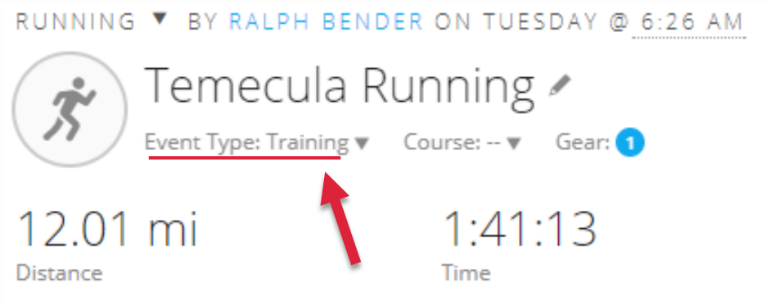![]()
 Little things can make a big difference.
Little things can make a big difference.
It has been over a decade since I got my first Garmin Forerunner watch. These devices use the GPS satellites to track running workouts, then sync the completed activities to software making it easy to analyze.
After finishing a workout, while cooling down with my protein-laced Gatorade and a handful of mixed nuts, I routinely add a few qualifying notes. One of the fields available is “event type.” For most of the year, they got labeled “fitness,” “race,” or, for my bike rides to and from the office: “transportation.”
However, two months ago, following a run wherein I had done a brief “ladder” workouti, I logged the event type “training.” It was a simple thing, but it did not take long before thoughts of returning to competitive form entered my mind.
Earlier this year I wrote about running vicariously through a friend of mine pursuing one of my dreams: a top ten age-group finish in the Boston Marathon. Unfortunately, Frank did not have a great day on “Marathon Monday” as New Englander’s call race day. Now I am entertaining thoughts of returning to Boston for the 2019 race, ten years after my only experience running Bostonii.
Lord willing, I can get in shape for qualifying attempts next February in the Phoenix-Mesa race or my hometown Run for the Red Marathon in May.
iA ladder workout is a series of incrementally longer intervals alternating between fast pace and slower recovery pace.in this case, the intervals are timed, starting at 15 seconds, then doubling to 30, 60, and 120, then working back down the ladder by repeating the sequence in reverse order. The important thing is to maintain the same pace for 120 seconds as at the shorter distances.
iiI finished in the top 15% overall and in my age group in the 2009 Boston Marathon, running a perfect negative split and one of my proudest running achievements.
TRACKING #1-643168
